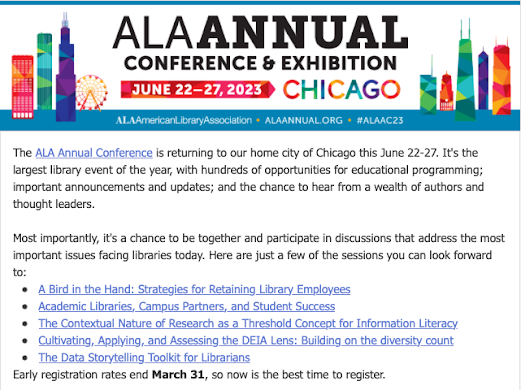re-authorship
What a great title for an article in this year's Book History about the extreme differences between British and U.S. versions of Charlotte Yonge's works in the late 19th century. The whole title is:
"Re-Authorship: Authoring, Editing, and Coauthoring the Transatlantic Publications of Charlotte M. Yonge's Aunt Charlotte's Stories of Bible History" by Leslee Thorne-Murphy, Book History 13 (2010)
The whole argument that Thorne-Murphy (T-M) makes is fascinating, showing that Yonge was produced as an author, to some degree constructed and re-written as a character in her own books.
Two particular aspects of this very well-written article fascinate me. First, T-M examines the British/U.S. publishing divide at a cultural level by examining the differences in how the author is figured in these very variant editions of the same work. That's interesting in and of itself, but it's especially useful to me as one of the comments on my book chapter on evolution in children's science books was that distinguishing these publishing contexts would be a good idea. And so it would! I know I'll refer back to T-M's brief lit review in this regard (note #9, Meredith McGill's American Literature... and S. and C. Moss's American Episodes Involving Charles Dickens). It seems likely that the work I'm doing on children's science books is new enough that I won't find specific publishing numbers before the chapter has to go to press, but I'll be attempting to do so.
The other angle that grabs me is the way that T-M goes about trying to decipher the editorial process that led to such different editions, pointing out practical tensions such as the publishers not paying Yonge as well as divergent narrative choices. In Britain, the narrator was an omniscient "Aunt Charlotte," already a character, but present only "in the title and on the title page." In the U. S., the narrator takes on a life of her own and becomes a person in the book. T-M does a lovely job of analyzing the complexities and contradictions inherent in and editor's rewriting of the author, hence the titular "re-authorship." I find this fascinating in relation to another project I have brewing that looks at an exchange between editor and author in the late 40s in regards to the depiction of race in children's books. That paper is still a glimmer in my eye, but it will emerge eventually, and T-M's citations on interactions between authors and editors (notes 17-19) will be a big help. This may in fact be the only article I've yet seen that addresses editing as part of the production dynamic of children's literature.
This is an excellent article, and while the above notes are really my reading it for my own purposes, I'd recommend it to anyone interested in authorship as a concept. The idea that an author's identity is "produced" seems more American Idol than 1880s, but T-M demonstrates that it was in fact in operation at that quaintly perceived period as well.
"Re-Authorship: Authoring, Editing, and Coauthoring the Transatlantic Publications of Charlotte M. Yonge's Aunt Charlotte's Stories of Bible History" by Leslee Thorne-Murphy, Book History 13 (2010)
The whole argument that Thorne-Murphy (T-M) makes is fascinating, showing that Yonge was produced as an author, to some degree constructed and re-written as a character in her own books.
Two particular aspects of this very well-written article fascinate me. First, T-M examines the British/U.S. publishing divide at a cultural level by examining the differences in how the author is figured in these very variant editions of the same work. That's interesting in and of itself, but it's especially useful to me as one of the comments on my book chapter on evolution in children's science books was that distinguishing these publishing contexts would be a good idea. And so it would! I know I'll refer back to T-M's brief lit review in this regard (note #9, Meredith McGill's American Literature... and S. and C. Moss's American Episodes Involving Charles Dickens). It seems likely that the work I'm doing on children's science books is new enough that I won't find specific publishing numbers before the chapter has to go to press, but I'll be attempting to do so.
The other angle that grabs me is the way that T-M goes about trying to decipher the editorial process that led to such different editions, pointing out practical tensions such as the publishers not paying Yonge as well as divergent narrative choices. In Britain, the narrator was an omniscient "Aunt Charlotte," already a character, but present only "in the title and on the title page." In the U. S., the narrator takes on a life of her own and becomes a person in the book. T-M does a lovely job of analyzing the complexities and contradictions inherent in and editor's rewriting of the author, hence the titular "re-authorship." I find this fascinating in relation to another project I have brewing that looks at an exchange between editor and author in the late 40s in regards to the depiction of race in children's books. That paper is still a glimmer in my eye, but it will emerge eventually, and T-M's citations on interactions between authors and editors (notes 17-19) will be a big help. This may in fact be the only article I've yet seen that addresses editing as part of the production dynamic of children's literature.
This is an excellent article, and while the above notes are really my reading it for my own purposes, I'd recommend it to anyone interested in authorship as a concept. The idea that an author's identity is "produced" seems more American Idol than 1880s, but T-M demonstrates that it was in fact in operation at that quaintly perceived period as well.
